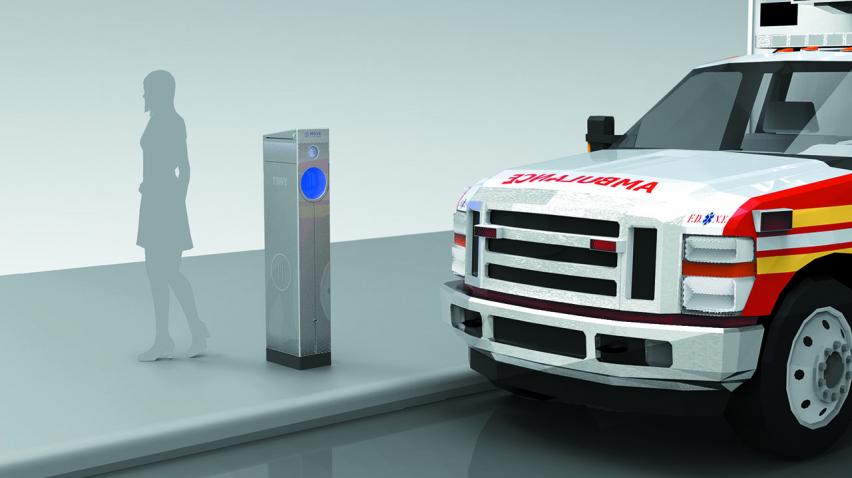
New fleet of ambulances will be powered by electricity and rechargeable at curbside
Pollution from exhaust fumes has long presented a major health hazard for residents of the South Bronx, but a new initiative by the fire department aims to put a dent in local carbon emissions, at the cost of a few parking spaces.
Starting this winter, the FDNY will start installing new charging posts—otherwise known as pedestals—on curbsides around the city, including Mott Haven, to charge a new fleet of ambulances that will run on electricity.
Ambulances rely heavily on power to keep medicine refrigerated and equipment charged, meaning that their engines must be kept running even while EMT responders wait for a call. According to the FDNY, idling engines account for 45 tons of carbon emitted into the atmosphere per ambulance annually. That’s 40.5 more tons annually than the average car in the U.S. The initiative is a small part of Mayor Bill de Blasio’s push to clean up New York City’s air and make it the cleanest of any major US city by 2030.
Emissions can be particularly harmful for seniors and children. According to the NYC Community Air Survey, fine particles are “small enough to penetrate deep into the lungs… worsening lung and heart disease and leading to hospital admissions, premature deaths and increasing risk of cancer.”
The company that devised the pedestals, Queens-based Move Systems, originally planned to use them to power food carts, which now rely on fume-emitting generators. The company set up a pilot site in Union Square in Manhattan. That quickly caught the attention of the NYPD, then got passed on to FDNY authorities.
According to the plan, all new ambulances will be equipped with “shore-power” equipment to make them compatible with the new pedestals. Although existing vehicles will not be retrofitted, the city says those older vehicles will be replaced with the more environmentally-friendly ones over time.
With any new rollout, costs are a concern. “Depending on where they cite them, the cost could vary tremendously,” said Sherri Login, manager of ConEd’s electric vehicle program. If sidewalk must be torn up to install pedestals or if the nearest power source is a distance away, installation will be costlier.
Jeffrey Hoffman, vice president of general counsel at Move Systems, estimates that each pedestal can cost anywhere from a few thousand to up to $10,000 to install. The FDNY says it plans to put in 180 pedestals over the next three years, many of them in the Bronx.
But an FDNY representative, Sophia Kim, said that although the new installations will cost taxpayers money, there will also be considerable savings. Less fuel will be burned while ambulances idle and engines will be less strained, said Kim, adding that that will in turn increase vehicles’ lifespans. Each “pedestal is estimated to save the Department $10,000 annually in ambulance maintenance repairs,” she said. That amounts to $1.8 million per year in savings.
Cost for the new devices will be picked up by the city’s five borough presidents. Bronx Borough President Ruben Diaz’s office did not respond to a request for comment about the new initiative.
The downside of the new pedestals is that some parking spaces will be removed to make way for the new streetside devices. And each pedestal will require that the adjacent parking spots remain empty. That means fewer spots for local drivers already anxious about the increasing number of vehicles vying for limited numbers of parking spots. The FDNY would not say where the new installations are being planned in Mott Haven.
Local resident Stacy Sebron, 45, who is severely asthmatic, said she doesn’t mind if some parking spaces are lost.
“Better breathing, especially in the Bronx,” takes precedence over everything else, she said.

